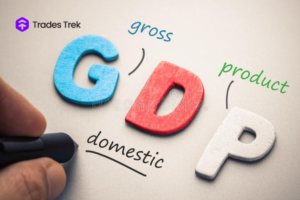Properly managing your investment is a skill that takes time to master. It takes consistency and proper research to manage your portfolio successfully. You’ve seen a 1-year-old baby trying to master the act of walking. He tries to stand and take some steps but ends up on the ground. He doesn’t stop trying because of the sudden fall but keeps making an effort until he becomes a pro at walking. As an investor, especially the newer ones, it’s okay if you’ve had some falls as you try to properly manage your portfolio like the one-year-old trying to walk. What matters most is what you do to cushion the fall and the steps you take to build a successful portfolio gradually.
This article is to help you become aware of mistakes you must avoid as you try to manage your portfolio. Before we dig deeper, let’s understand what portfolio management entails and the main objectives of adequately managing a portfolio.
What is Portfolio Management?
Portfolio management is selecting and monitoring a group of investments to match an investor’sinvestor’s long-term goals and risk tolerance, thereby maximizing earnings within a given time horizon.
Objectives of Portfolio Management
The main objectives of portfolio management are to:
- Maximize significant return on investment.
- Increase capital growth.
- Cushion investor’s risk level
- Optimally allocate resources
- Have a flexible portfolio
- Protect earnings against market risk.
Having understood what portfolio management means and its objectives, let’s take it further to reveal mistakes you should have avoided as you manage your portfolio.
- Need to Align Your Investments With Your Goals.
How significant are your goals if it needs backing up with suitable investment options? Several investment options are generally more suited than others depending on the investing timeframe of your goal. For instance, you can think about investing in things that are less likely to lose you the money you’ll need soon if you have short-term goals.
You must consider investing in assets that are more likely to provide a significant return on investment in the future if you have long-term goals. Due to the potential for high volatility over the short term, long-term investments with growth potential may not be suitable for short-term timelines and, if sold, might result in a loss of capital. On the other hand, you might not want to make short-term investments that maintain your money’s worth.
- Neglecting Your Risk Appetite Before Investing
Risk is about accepting the possibility of losses, the capacity to tolerate market fluctuations and the impossibility of foreseeing the future. Despite your level of risk tolerance, you should always weigh both risk and reward when deciding how to spend your money.
Your risk capital plays a crucial role in capital allocation. Don’t delve into investing without first analyzing the level of risk you’re willing to take. You can manage your portfolio well if you know how much risk you are ready to take.
Risk can be thrilling to some investors, while other investors experience anxiety. Every day, life involves some level of risk for all of us, whether driving or investing in the stock market. Each person has a risk profile that identifies their level of risk tolerance. Age, lifestyle, and aspirations typically shape it and will likely vary over time.
Even though stocks appear as higher-risk assets, even more conservative investments like bonds are subject to temporary losses. Nothing you invest in carries zero risk.
You’re more likely to feel at ease with your financial choices if you know your risk tolerance and are honest about what you hope to accomplish. Your risk tolerance might be better understood by a financial advisor, who can also help you build a portfolio that is right for you.
It’s also important to note that as you age, your financial condition and family situation change, and your risk tolerance will also alter.
You should also review your portfolio’s risk level to ensure it aligns with your overall investing goals. Because financial markets are dynamic, the underlying assets you invest in may also change.
If you are a confident investor, you should ensure it is still on course to produce the degree of return you desire and, more critically, at a level of risk you can tolerate. If you’d prefer to work with a financial advisor, they can assist you with portfolio rebalancing and regular evaluations.
- Creating a Portfolio of Investment Without Adequate Research
Without adequate research, diving into the heart of investing will only end in futility. Fundamental and technical analyses are powerful tools you can use as you create and build a successful portfolio.
Investing in research is a never-ending process of learning and using new information to maintain an advantage over other investors and produce significant profits. How you distinguish yourself from most other investors is a valid question. The straightforward response is to put in a lot of time, effort, and focus—efforts that most other investors don’t bother with. Like with most accomplishments, the performance gap between experts and everyone else is carved out by the majority of people ready to devote enormous amounts of time and effort to a task.
Research is part of an investor’sinvestor’s due diligence. Whether you work with investment professionals or independently, doing your homework is wise.
- Not Diversifying
Diversifying your assets is one method for achieving risk-reward balance in your investing portfolio. Although there are many alternative ways to combine purchases under this strategy, the fundamental concept is distributing your portfolio across many asset classes.
Diversification reduces price volatility by distributing your investments over several sectors or industries that have a minimal correlation to one another, as shown by the numerous research that supports this claim. This approach is because different industries and sectors don’t rise and fall simultaneously. You’re likely to avoid significant declines in value if you diversify your holdings since, while some industries may be struggling, others might be booming. Performance across the board of the portfolio is hence more stable.
- Over Diversifying
Some investors go overboard in a bid to diversify. This over-diversification happens when the return on each additional investment in a portfolio is lower than the corresponding decline in risk.
An investor may theoretically own so many investments that, rather than diversifying their holdings, their portfolio would be worse off because there would be no added advantage from other assets held above a particular threshold.
The primary danger of excessive diversification is that it lowers portfolio returns without significantly lowering risk. For instance, having more than 100 stocks can make it challenging for an investor to manage their portfolio, which may lead them to maintain losing stocks for an excessively long time. Just strike a balance when diversifying.
To Wrap Up
Portfolio management isn’t a single, one-time off; it’s a continuous process. You must be able to construct a successful portfolio and regularly monitor the progress of the portfolio to suit your investment strategy as you avoid making some investment mistakes outlined above.




